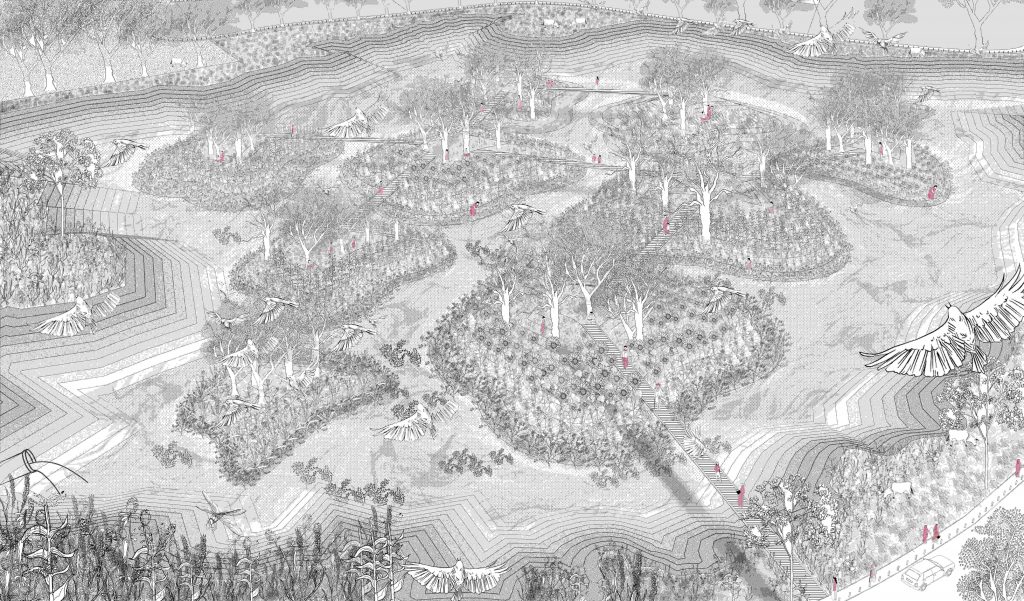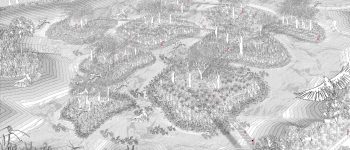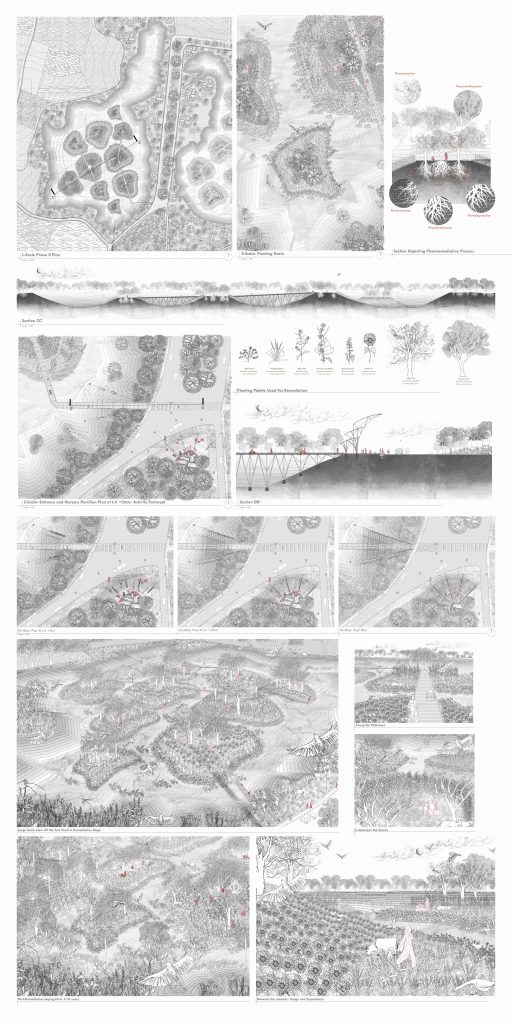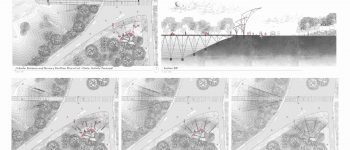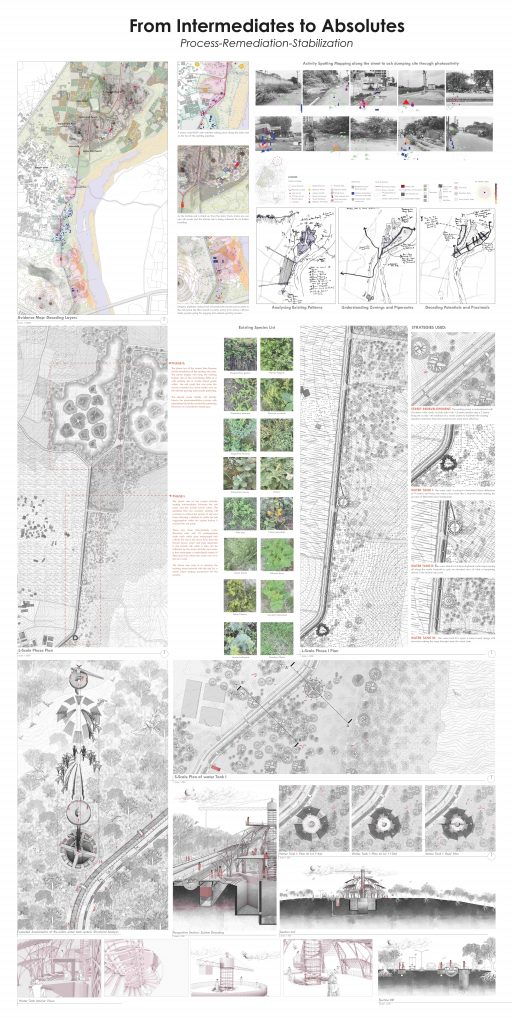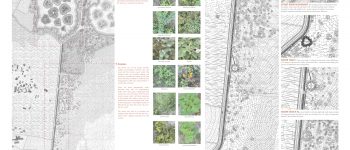The project focuses on remediating an industrial waste ground in Gandhinagar, heavily impacted by ash (containing arsenic, lead, etc) dumping from the Torrent Power Plant (a by-product of thermal power generation). A 12-meter-deep ash pond, situated 2km from the plant, remains unexplored mainly despite ongoing activities like grazing and other related activities in and around the site. The project unfolds in two phases to address this environmental challenge of industrial waste disposal.
The Phase one involves creating intermediary structures between the plant and the ash pond. Existing pipelines will be extended to incorporate a system that segregates ash from the slurry before reaching the pond with underground filtration units with sedimentation tanks; each will collect and separate bottom ash for direct truck collection while purifying water through a centrifugal filtration system, channeling it to a new pond. This phase also includes enhancing the site’s street network for improved public experience.
The phase two focuses on remediating the ash pond by using 30% of the existing bottom ash mixed with soil to form island mounds. These islands will undergo phytoremediation, fostering plant growth and transforming the area into a productive landscape.
The core idea here is to create unobtrusive architectural solutions as intermediaries within the larger landscape, effectively managing industrial waste in alignment with the thermal power plant’s waste management.
The project explores through three scales. Firstly, the XL scale addresses and interprets the existing issues within the larger landscape through thorough evidence mapping. The L-scale then shifts its focus to giving potential to the existing pipeline that carries the bottom-ash slurry to the ash-dumping pond and also focuses on remediating one of the ash ponds. The S-scale tries to detail the nuances within the design strategies to create unobtrusive architectural solutions. The approach also in a large scale is to restore and remediate the existing eco-system that has been affected by heavy ash dumping through phyto-remediation methods.
The larger stakeholders in the project are the Gandhinagar torrent power plant, UGVCL (already a public-private partnership exists), residents around the neighborhood, and villagers dependent on agriculture around the area for income.

